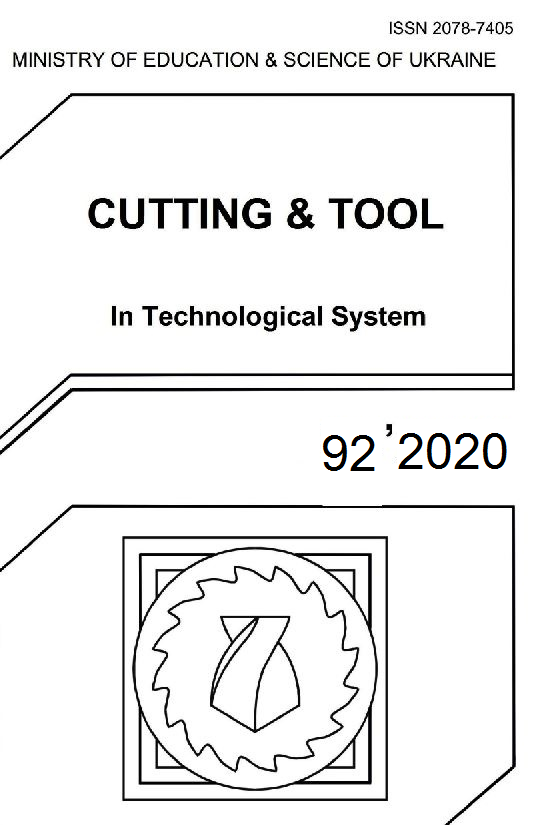COMPARATIVE ANALYSIS OF HARD MACHINED BORES BASED ON THE ROUGHNESS AND ACCURACY
DOI:
https://doi.org/10.20998/2078-7405.2020.92.03Keywords:
functional properties, surface roughness, accuracy parameters, turning, grinding, combined procedures.Abstract
The results of a comparative study on the machining of hard machined surfaces are presented in this paper. We compared the surface roughness, roundness and cylindricity errors of bores machined by grinding, hard turning and a combined procedure. Based on the results we ranked the studied procedures to help in decision making in process planning.References
Kundrák, J.: The scientific principles of increasing the effectiveness of inner surfaces cutting with CBN tools. Harkov, p. 368, 1996.
Byrne, G., Dornfeld, D., Denkena B.: Advancing Cutting Technology. CIRP Annals 52(2), pp. 483-507, 2003.
Bartarya, G., Choudhury S.K.: State of the art in hard turning, International Journal of Machine Tools and Manufacture, 2011.
Kundrák, J.: Alternative machining procedures of hardened steels, Manufacturing technology 11, 32-39.
Samantaraya, D., Lakade, S., Keche, A.: An Alternate Machining Method for Hardened Automotive Gears. Procedia Manufacturing 20 (2018) 517–522.
Kundrak, J., Varga, G., Deszpoth, I., Molnar, V.: Some aspects of the hard machining of bore holes. Applied Mechanics and Materials, 309, pp. 126-132 (2013).
Downloads
Published
Issue
Section
License
Copyright Notice
Authors who publish with this Collection agree to the following terms:
1. Authors retain copyright and grant the Collection right of first publication with the work simultaneously licensed under a Creative Commons Attribution License that allows others to share the work with an acknowledgement of the work's authorship and initial publication in this Collection.
2. Authors are able to enter into separate, additional contractual arrangements for the non-exclusive distribution of the Collection's published version of the work (e.g., post it to an institutional repository or publish it in a book), with an acknowledgement of its initial publication in this Collection.
3. Authors are permitted and encouraged to post their work online (e.g., in institutional repositories or on their website) prior to and during the submission process, as it can lead to productive exchanges, as well as earlier and greater citation of published work.

